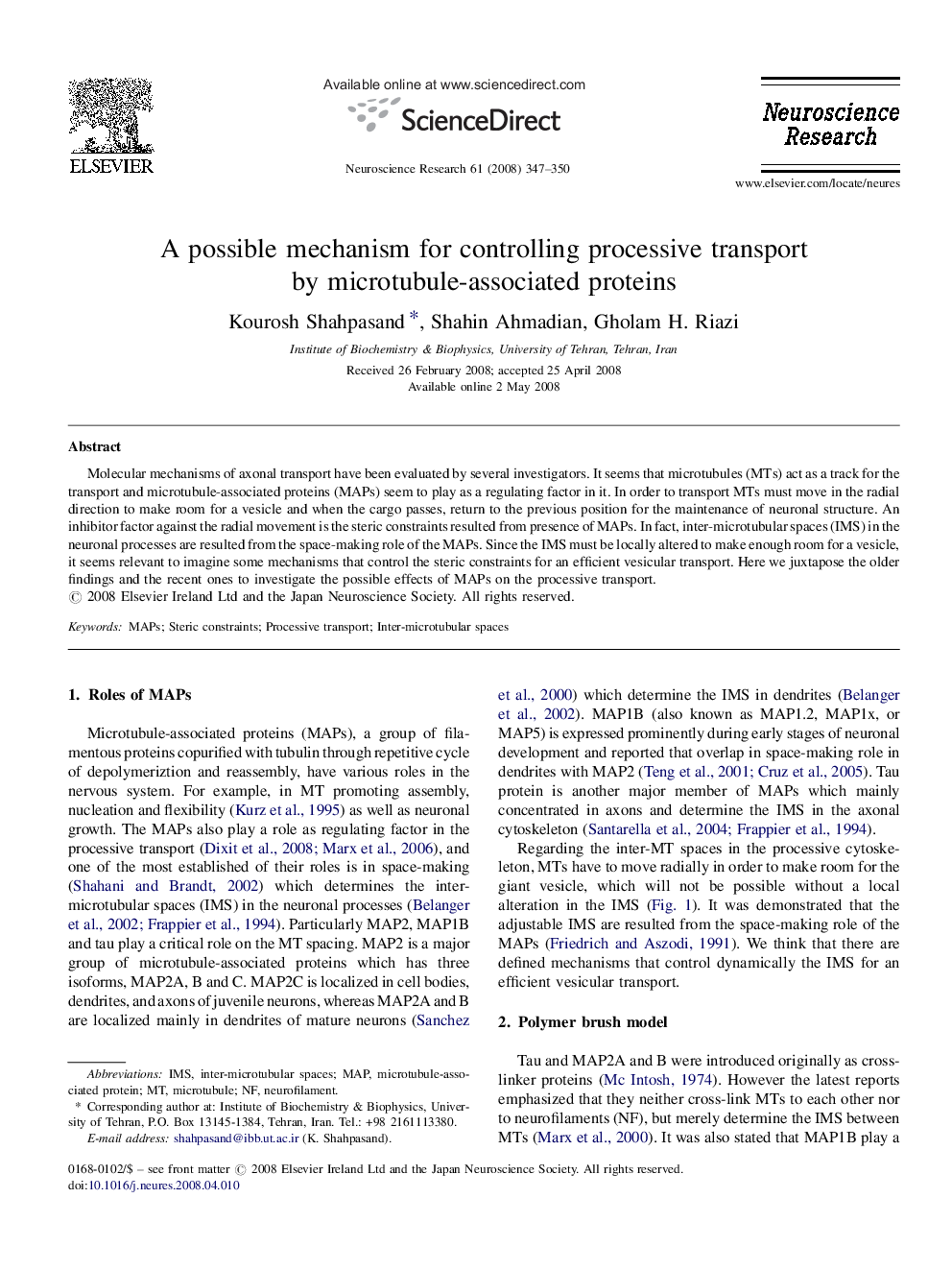| Article ID | Journal | Published Year | Pages | File Type |
|---|---|---|---|---|
| 4352532 | Neuroscience Research | 2008 | 4 Pages |
Molecular mechanisms of axonal transport have been evaluated by several investigators. It seems that microtubules (MTs) act as a track for the transport and microtubule-associated proteins (MAPs) seem to play as a regulating factor in it. In order to transport MTs must move in the radial direction to make room for a vesicle and when the cargo passes, return to the previous position for the maintenance of neuronal structure. An inhibitor factor against the radial movement is the steric constraints resulted from presence of MAPs. In fact, inter-microtubular spaces (IMS) in the neuronal processes are resulted from the space-making role of the MAPs. Since the IMS must be locally altered to make enough room for a vesicle, it seems relevant to imagine some mechanisms that control the steric constraints for an efficient vesicular transport. Here we juxtapose the older findings and the recent ones to investigate the possible effects of MAPs on the processive transport.
